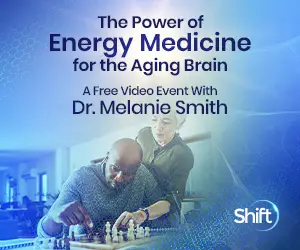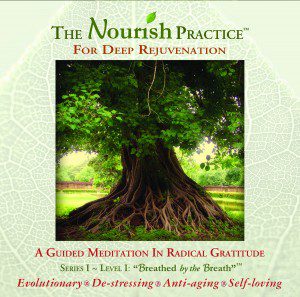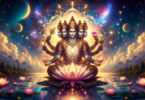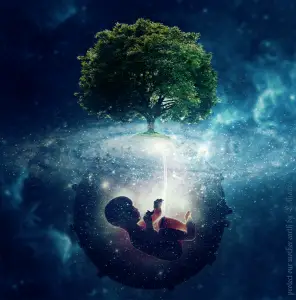 By Jack Adam Weber, L.Ac., Dipl. C.H.
By Jack Adam Weber, L.Ac., Dipl. C.H.
Contributing writer for Wake Up World
Integrated Spirituality: Unearthing Heaven in Our Bodies to Save What is Left of the Planet
An integrative spirituality is one in which our bodies, minds, and emotions all inform and maximize the development and flowering of one another. The result of this rich becoming, which then serves the world its gifts, passion, integrity, beauty, and creativity is an integrative spirituality. This process, however, is as difficult as it is enjoyable.
A cornerstone of this integrative path is transformation, via converting darkness into light. To do so requires a certain disintegration process, so that the threshold distinguishing one phase (darkness) can be transformed into another (light).
When joy and fulfillment are found from pain and despair — the latter experiences correlate with the depths of our bodies as the locus for the disintegration-integration process — it is our bodies that bear this light, because we first embraced and allowed ourselves to be acted on by the dark’s difficulty. The result, then, is to feel light as deeply as we felt our darkness, through the very channels that caused us so much pain. This can also be described as the union of Yin and Yang, which in perennial wisdom represents wholeness, integration, and sustainability.
Love Affair
I’ve been accused of having a love affair
With death and darkness.
It’s true.
Yet I cherish and live for the light;
It’s just that I found it in the dark.
After all, how many light-graspers can say
They also adore the darkness?
Beholden to dark and light
Yin and Yang are forever married
In my heart.
Spiritual Sustainability
When our love is born of both light and dark, it also becomes sustainable and able to foster and honor the death and rebirth cycle of nature that keeps the fertility of renewal alive. Pain cracks the shell of our everyday hearts, submerging us into the “deep earth” of our bodies, growing our hearts downward. This way, our broken-open hearts feel like they merge with the world, as in a “heart as wide as the world”. Our hearts becoming this deeply connected to the world through heartbreak engenders an Earth-based spirituality, wherein we care for the world, for the Earth. It is through pain and darkness, then, that our spirituality is forged in earnest and finds its locus for activity here, in the world.
When most think of “sustainability” they think of managing resources, minimizing purchases, recycling, not polluting, simplifying life, and supporting local businesses, as if it were solely a matter of external logistics. All these practices require a certain inconvenience and “doing without”, which most people are not willing to make. We forget that humans make choices based on many factors, not the least of which is our emotional status.
Consider that unsustainable choices, including an inability to “do without”, are made from the vortex of our unresolved pain, particularly our historical wounds and a failure to grieve them. If we don’t resolve this pain, we are far less willing, if not incapable, of inconvenient choices because we feel a need to choose comforts, and an abundance of them, to quell our unconscious and conscious pain. These comforts come in the form of the typical American lifestyle, from junk food to cheap, quick-fix plastics, from synthetic perfumes to perfect, pesticide-laden lawns — all of which numb us further, diminish our health and true commonwealth.
If we instead embraced our pain, and grieved it, for which our hearts need to break, rather than try to cover up and ignore our emotional pain, we would not need to try to quell it with material painkillers. This is a subject I discuss at more length in the introduction to my new book of poems, titled Rebearth.
Little public attention is given to becoming an emotionally and spiritually sustainable person – a person not only wanting but capable of doing without and feeling confident and secure enough in themselves to give up some personal comforts for the greater good. Such a person would have to be inwardly resourced to go against the grain of mainstream consumerism society and be able to care enough (ie. not numb) to comprehend the situation of our environment.
We develop these inner resources, including genuine care and compassion, by consciously embracing our dark emotions and being transformed by them. When we learn first-hand what it is to hurt, to not turn from it but to feel it until it leaves of its own accord, and we emerge renewed and integrated, something changes in us that causes us to want to prevent and to help heal that pain in others and in nature. This is the making of the activist-healer, born in the dark night of the soul.
Pain as a Resource for Growth
Is it clearer now why becoming a sustainable person through heartbreak is necessary to creating a sustainable world? I don’t see that we can be truly physically sustainable without being emotionally-spiritually so. In this sense, an embodied, earth-centered, integrative spirituality is also a sustainable one because it recycles heartbreak’s darkness – as decay, death, difficulty and pain – into light – as growth, newness, purity, freedom, exuberance, and fulfilment. This natural law is also evidenced in the simple turning of the seasons, from winter’s bleakness and death into summer’s abundance and proliferation. We follow this same cycle physically, for example, in the constant death and regeneration of new cells in our bodies. Emotionally we pass through this cycle, for example, from grief and despondency into more care, joy, and passion. Spiritually we embody this cycle in the rich inner life we develop from pain and hardship.
To meld our many body-mind facets into one cohesive life force requires a certain “melting” or “boiling down” of our psyches into our depths, our unconscious. Down there a primary foundation can be established for further development upwards, into expression of our whole person, replete with a fuller stock of inner resources gleaned from passage through this dark night of the soul. The manifestation birthed from the passage of dark to light is our fullest expression of Beauty, displaying all colors in between. This process is why such transformation draws allusions to alchemy, the transfiguration of lead into gold, as a metaphor for darkness into light. Since difficulty and pain are the incubation chambers for beauty and more love, this spirituality welcomes all experience and all human faculties as resources for growth and service to life.
An integrative spirituality is also synonymous with an “embodied spirituality”, since our bodies are, in an experiential sense, our unconscious. It is down into our bodies where we turn our attention to encounter what is beneath our discursive minds. Deep down there in the mysterious dark of our bodies is where we feel our feelings, where dreams seem to come from, and where we go for intuition and to access our gut feelings.
Because our bodies are essentially made of the elements of the nature, an embodied spirituality extends itself naturally to an Earth-centered spirituality. Again, this includes a celebration of each phase of nature’s perpetual cycle of life, death, and rebirth, which is another way of describing transformation as disintegration recreated in the newness of rebirth. Both a body-centered and earth-centered spirituality embrace and celebrate every aspect of life as meaningful and as grist for the mill in churning out our full humanness, our wholeness in body, emotion, and “spirit.”
Emotion Takes Center Stage
“There can be no transforming of darkness into light and of apathy into movement without emotion.” ~ Carl Jung
Since the conversion of darkness to light is the hallmark of an integrative and therefore transformational spirituality, such spirituality must also be “emotionally-centered”. Since we feel our emotions in our bodies, this spirituality is also body-centered and therefore also Earth-centered, because our bodies are microcosms of the Earth. Indeed, our emotions fuel this transformation of darkness to light, especially our dark and difficult emotions of grief, fear, and remorse. Therefore, to become more light, we would be wise to embody our “dark” emotions.
Curiously, these dark emotions are also the very ones that correspond with the Yin aspects of the Yin-Yang cycle from Taoist wisdom. This Yin part of the cycle includes the grief and sadness that correspond with autumn and the Metal Element as well as the fear, death, and despair of winter and the Water Element.
Our emotions are our internally registered interface, gauge and compass with external reality. They also are what connect us to the depths of our bodies, and therefore to Nature. An integrative spiritual path that includes our humanness and everyday reality, must be heavily vested in emotional (transformation) healing so as to deepen our experience of ourselves and to make our engagements with “other” as fulfilling (and enjoyable) as possible. “Other”, of course, includes all aspects of life, including the living planet.
An integrative path can’t just give lip service to our difficult emotions, to our suffering, or assume the detached witness position, a posture which many New-Age types seem to try on in order to not have to dip into difficult depths (since difficulty and darkness are antithetical to their belief of “love”). In my experience, true integration as an embodied spiritual path must especially embrace being in the mud, like the lotus – the mud corresponds with the depths of our own bodies. For only by finding light in and from that darkness, through both experience and insight, can we rise up integrated. Our newfound wisdom, joy, compassion and passion emanate from the very conditions which embodied their opposite – in our pain and suffering. This union of opposites, and an openness and path through both, is an integrated spiritual path.
Have Faith in the Night
When we don’t move away from unavoidable pain and difficulty (note: this does not mean we search for them, or want them), but allow them to work on us, we develop into more than our fear, the fear that stopped us from descent into the underbelly of pain and all the hidden treasures there we salvage from the transformation process. These treasures include: a deeper love, more empathy, creativity, passion, fulfilment, less pain, better physical health, increased sensitivity (less numbness), less fear and more courage, purpose, meaning, comfort in our own skin, increased energy, more ability to show up for the greater good, living from a more deeply, body-sourced sourced light, more care for our bodies and the Earth (because we have embodied ourselves more fully)…. and the list goes on.
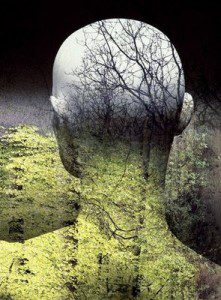 A fear of descent into feeling the depth of our pain, which is actually the way to heal it, and moving unilaterally towards “love and light”, is often fear in disguise – a fear of our bodies and the troughs of discomfort. When we can find this love and light in the dark of our pain and difficulties, we conquer a bunch of fear and can rest in our bodies and love more robustly and with more wisdom. We can show up deeply for others in their most challenging moments, experience a broader and deeper freedom inside our own bodies, can be of service to suffering in the world from a deep place, and many of other life-affirming qualities. To do this we must, as Rilke said, “have faith in the night”.
A fear of descent into feeling the depth of our pain, which is actually the way to heal it, and moving unilaterally towards “love and light”, is often fear in disguise – a fear of our bodies and the troughs of discomfort. When we can find this love and light in the dark of our pain and difficulties, we conquer a bunch of fear and can rest in our bodies and love more robustly and with more wisdom. We can show up deeply for others in their most challenging moments, experience a broader and deeper freedom inside our own bodies, can be of service to suffering in the world from a deep place, and many of other life-affirming qualities. To do this we must, as Rilke said, “have faith in the night”.
The degree to which we avoid embracing and moving through our pain, especially more significant losses, is the degree to which we create more of it. This happens through what Carl Jung described as projection. What we deny becomes our shadow. When we deny feeling hurt and fail to grieve it, we are likely to project this shadow onto the world, which usually takes the form of violence, deceit, neglect, greed, cold-heartedness and destroying the natural world, to name a few. It may also never rise up to project itself, becoming repressed rage, apathy or despondency.
The cure to projection is to take what love and light we do have and focus it into our dark places – into our current and especially our historical core wounds – in order to rescue more of our love and light. This is called grief work, which rescues parts of our hearts we may not even have known existed, but perhaps sensed (since we can sense the degree of our wholeness when we pay attention). Grief clears pain. As we lovingly abide by our own unwinding of pain, by telling and feeling the story of the love we did not get in so many ways, this re-loving ourselves replaces the pain with compassion and care. Grief, after all, is integral to love, and births love in its deepest, most compassionate and empathic fullness.
Grief work is creative work. It involves working with sensations, memories, feelings, emotions, intuition, and critical thinking to both feel and learn about the stories of unfelt losses that live in our bodies. There is a step-by-step process for doing this work, which serves more as stepping stones and sign-posts to lend some structure and method to working through the constantly changing milieu of qualia particular to our personal experience of lost love.
Indeed, learning to nourish ourselves with our own unconditional love through the process of unearthing our pains, which emotion then floods our awareness, can feel like anything but “loving”. But this is precisely why and when we need to expand our notion of love to include the dark parts of our hearts, which hollow us out to help us reclaim our depths and compassion.
Thinking is Good for Your Spirituality
Many, unfortunately, consider thinking to be antithetical to spirituality. In other words, thinking has little or no place in spirituality. I could not agree less. To divorce critical thinking and logic from spirituality in favor of “experience” and “mysticism” is perhaps to be a little too enamored with the idea of spirituality being intangible and other-worldy, rather than, say, that of loving the world and the living Earth most fully and wisely, which is an integrated, Earth-centered path.
Look at how many have suffered and even died following “spiritual paths” unwittingly, blinded by experience and ignorance and common sense because they were enamored with something that appeared other-wordly, extreme, holy or “secret”. Those who died in the desert of Arizona under the guru James Arthur Ray are an example. A little critical thinking in place of magical thinking might have saved their lives.
Yet, danger and damage on the spiritual path – and particularly on an integrated path – need not be so severe as abuse and death in order to be significant. It shows up in the most common everyday moments. Critical thinking is crucial to an integral, embodied spirituality to help us skillfully navigate our reactions to external stimuli. For example, say that your partner says something that hurts or upsets you. It is worthwhile to ask them first what they meant by their statement because it might mean something different than how you perceived it and therefore reacted. I call this “getting the facts straight”.
This is a practical example of the old allegory of the stick in the road: if you think a stick in the road is a snake it can trigger all sorts of emotional knee-jerk reactions in you. But, when you look carefully (elementary critical thinking) and see it is only a stick, your emotions subside. Thinking affects our emotions, positively or negatively, so thinking well is critical to our emotional health and therefore to our spirituality. Critical thinking and observation of reality (thought and feelings inform one another) help us live an accurate and compassionate spirituality ie. not reacting because of what you imagine you partner meant, maybe wait until after you have the facts straight! This makes our experience more congruent, productive, kind and enjoyable.
The way out of our stories and pain is through them, compassionately abiding by their re-telling and re-experiencing. This “re-loving” ourselves is how we write a new story, which gets written through us, in a sense, as we show up for ourselves in the places that have hurt and likely numbed us for too long. For, to deny and not feel pain that lives inside us, we have to be numb to it, and this same numbness is the lack of sensitivity we bring to all aspects of our lives. Our new story, then, becomes just as integrated into our “flesh and bone” as the story of our wounding, precisely because it gets written in the midst of releasing that pain from our bodies. This is the emotional healing dynamic alluded to in the beginning of this essay.
Some Neuroscience in Support
Neurons are the parts of our nervous system that store and connect associated memories and behaviors, which are mediated neurochemically. If there were ever a microcosmic embodiment of body-mind it would be our neurons; they are body parts that play a central role in mediating our thoughts and emotions! “Neurons that fire together, wire together” is a description of a theory in neuroscience called Hebbian theory, put forth by Donald Hebb. It basically means that when two or more neurons are activated (“fire”) together, and one activates the latter, the two become “associated” with one another into what is called an engram. Activity in one neuron then facilitates activity in the other.
Applying this theory to our example of healing pain, let’s say Neuron A triggers painful memories and feelings for us. Let’s say that Neuron B is the neuron encoding and registering our feeling of love and compassion (in actuality, I think both examples would include many more neurons than just two). If our love and attention from Neuron B causes Neuron A to activate (fire) then the two become associated, by firing and therefore wiring together. I postulate the possibility that the more we activate Neuron B, the more our love and compassion can be felt when Neuron A fires. Because the two neurons fire together, they wire together more strongly so that whenever Neuron A is stimulated, so too will Neuron B. Over time, and with patience, love and compassion “as love and light”, Neoron B could outweigh the activated pain in Neuron A. This balance would be enhanced if memory extinction (as the overriding of painful memories and feelings) occurred as well.
This theory for clearing trauma is a furthering of ideas I presented many years ago on the topic of “fear memory” as the basis for successful psychotherapy, wherein the love of unconditional regard in the presence of reliving painful memories creates healing by learning new associations in the presence of painful (remembered) ones.
On writing these lines I just did a Google search to see if any new information is available on memory extinction, and lo and behold, a relatively new study is out that speaks to precisely this theory I put forth. It speaks to a new gene, named Tet1, which aids in memory extinction, and therefore the possibility for learning positive experience in the presence of pain. Here is an excerpt:
“What happens during memory extinction is not erasure of the original memory,” Tsai says. “The old trace of memory is telling the mice that this place is dangerous. But the new memory informs the mice that this place is actually safe. There are two choices of memory that are competing with each other.
In normal mice, the new memory wins out. However, mice lacking Tet1 remain fearful. “They don’t relearn properly”, Rudenko says. “They’re kind of getting stuck and cannot extinguish the old memory.”
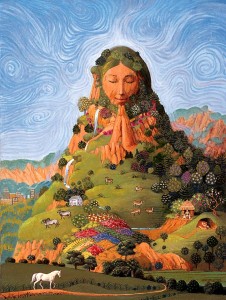 In sum, when we uncover an abundance of love and light in our bodies through the process of clearing pain in our body-minds, we might find ourselves less interested in heaven, love, and God being anywhere else other than in our own deep hearts and in the gorgeous, life of nature. Finding this light in our bodies, and especially in the midst of the worst pain and difficulty, gives us unspeakable faith in our own capacities for healing and in the earthiness of the numinous.
In sum, when we uncover an abundance of love and light in our bodies through the process of clearing pain in our body-minds, we might find ourselves less interested in heaven, love, and God being anywhere else other than in our own deep hearts and in the gorgeous, life of nature. Finding this light in our bodies, and especially in the midst of the worst pain and difficulty, gives us unspeakable faith in our own capacities for healing and in the earthiness of the numinous.
When we can inhabit our own bodies and hearts this fearlessly, our love can feel the freedom and receive the fuel to expand into all domains of earthly, embodied life. This is how we integrate what often seems mysterious, ethereal, and spiritual into ordinary life, to make life here extraordinary. Extending this love to the Earth — as an extension of our bodies, as heaven through Earth — is a fundamental shift to help save our planet and our troubled humanity. Understanding the underlying dynamics of how integration via transformation of darkness to light allows us to live a more embodied, emotionally sustainable life, and persevering through this journey, makes us able to choose sustainably, to deeply care for one another, and for the Earth. It is what underlies greed.
The Nourish Practice
Jack Adam Weber’s “The Nourish Practice” is an easy, guided meditation-Qi Gong practice in radical gratitude and self-love. It is an Earth-based, body-centered practice — at once physiological and mythological — that is deeply relaxing and replenishing, especially for modern-day burn-out syndrome, and requires little physical effort.
The Nourish Practice “resets your nervous system” and fosters a rich inner life. You can purchase The Nourish Practice as a CD or Digital Download here.
Recommended articles by Jack Adam Weber:
- Relationships: The Costs of Staying When We Should Leave
- Emotional Work
- Choosing a Partner – How to Avoid Relationship Suicide
- Re-Thinking Love: Why Our Hearts Must Also Be Minded
- Spirituality – Reality Check
- 11 Crucial Tips for Better Digestive Health
- Shadow Work: Becoming a Sustainable Light Worker (Part 1)
- Oneness in Action: The GMO Eradication Movement
- After the Hurricane: Lessons from the Heart of Nature
- Relationships: How They Can Make Us Happier
- Heartbreak – Loving Ourselves Through Difficult Times
About the author:
 Jack Adam Weber, L.Ac. is a Chinese medicine physician, author, celebrated poet, organic farmer, and activist for body-centered spirituality. His books, artwork, and provocative poems can be found at his website PoeticHealing.com. He is also the creator of The Nourish Practice, an Earth-based rejuvenation meditation. Weber is available by phone for medical consultations and life-coaching.
Jack Adam Weber, L.Ac. is a Chinese medicine physician, author, celebrated poet, organic farmer, and activist for body-centered spirituality. His books, artwork, and provocative poems can be found at his website PoeticHealing.com. He is also the creator of The Nourish Practice, an Earth-based rejuvenation meditation. Weber is available by phone for medical consultations and life-coaching.
You can connect with Jack Adam Weber on Facebook or by emailing [email protected].

If you've ever found value in our articles, we'd greatly appreciate your support by purchasing Mindful Meditation Techniques for Kids - A Practical Guide for Adults to Empower Kids with the Gift of Inner Peace and Resilience for Life.
In the spirit of mindfulness, we encourage you to choose the paperback version. Delve into its pages away from screen glare and notifications, allowing yourself to fully immerse in the transformative practices within. The physical book enriches the learning process and serves as a tangible commitment to mindfulness, easily shared among family and friends.
Over the past few years, Wake Up World has faced significant online censorship, impacting our financial ability to stay online. Instead of soliciting donations, we're exploring win-win solutions with our readers to remain financially viable. Moving into book publishing, we hope to secure ongoing funds to continue our mission. With over 8,500 articles published in the past 13 years, we are committed to keeping our content free and accessible to everyone, without resorting to a paywall.

